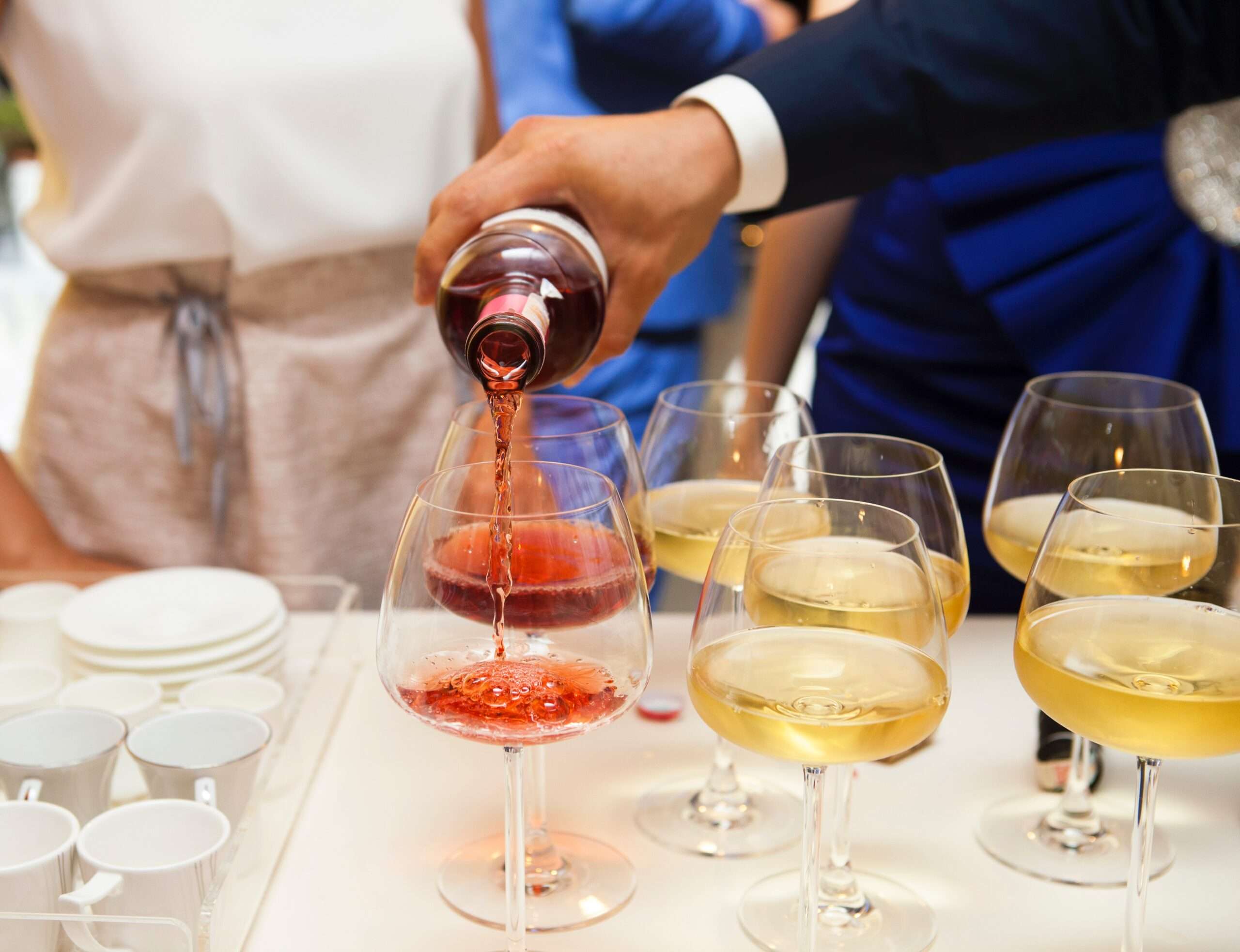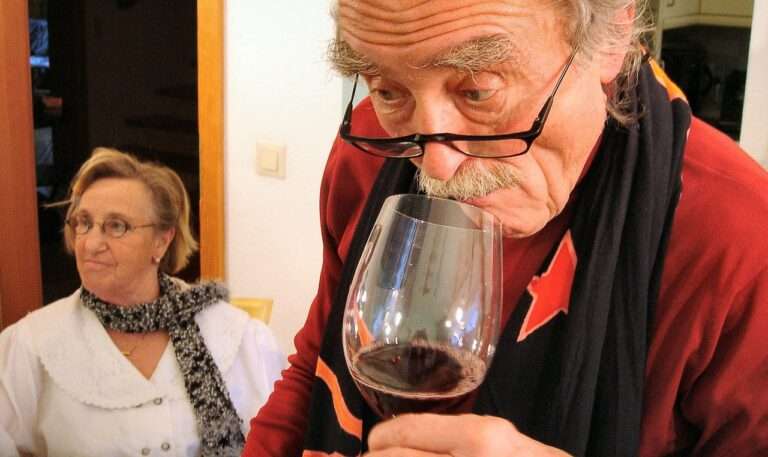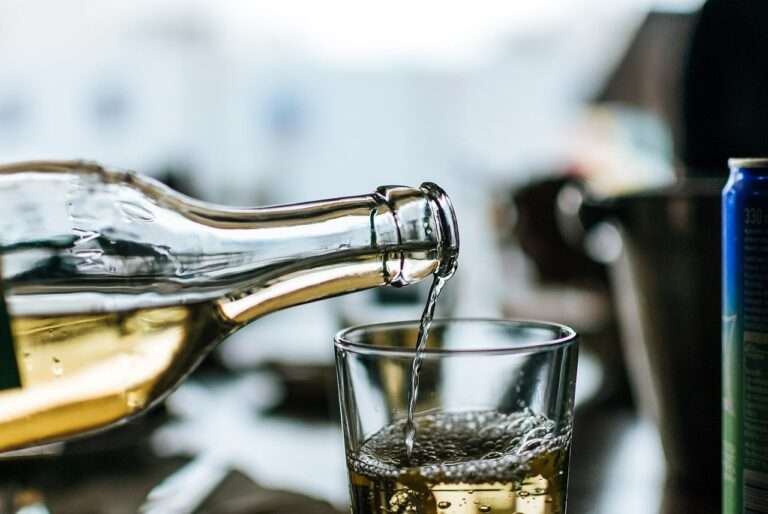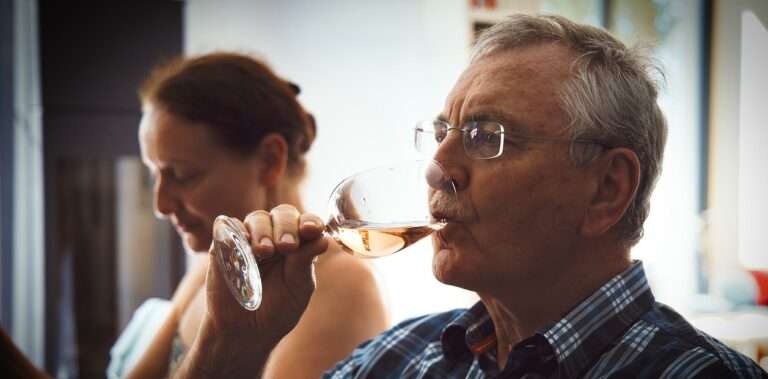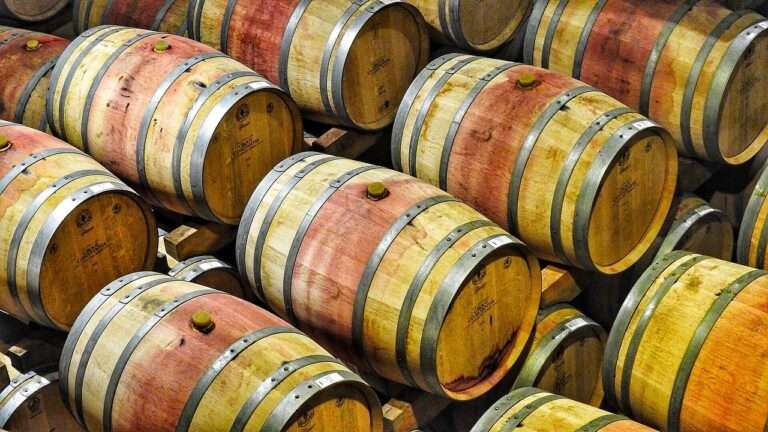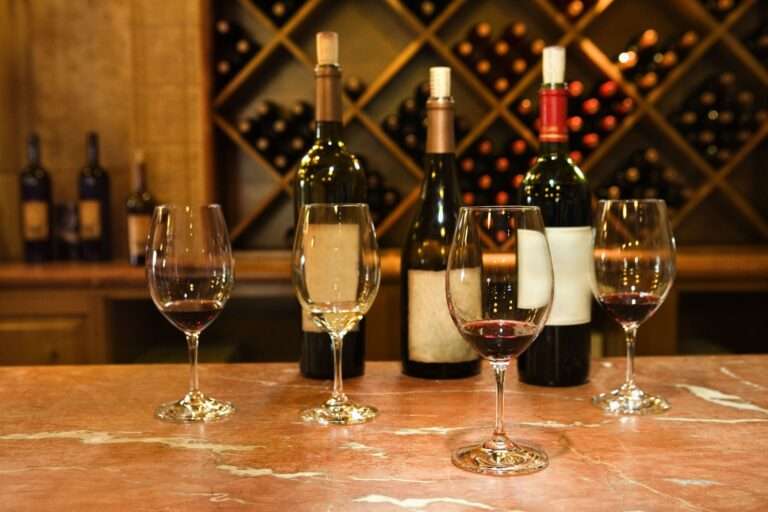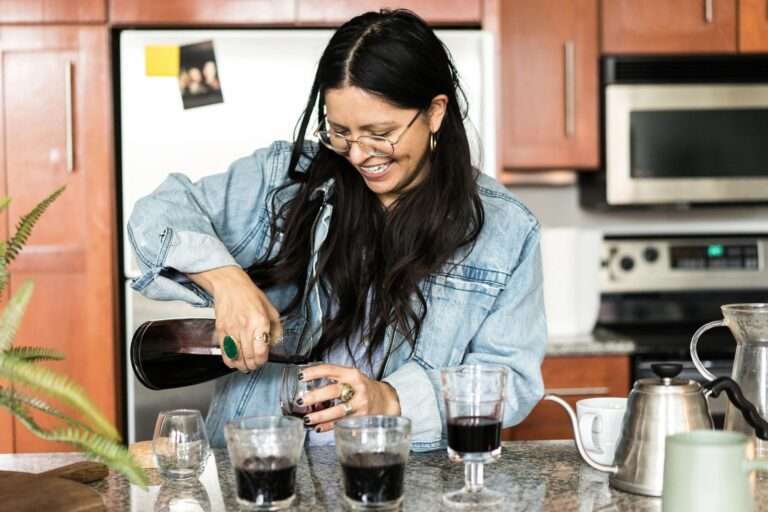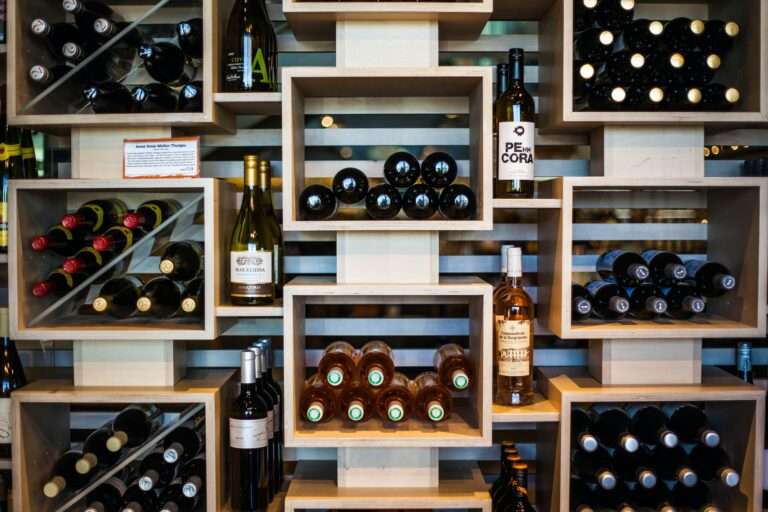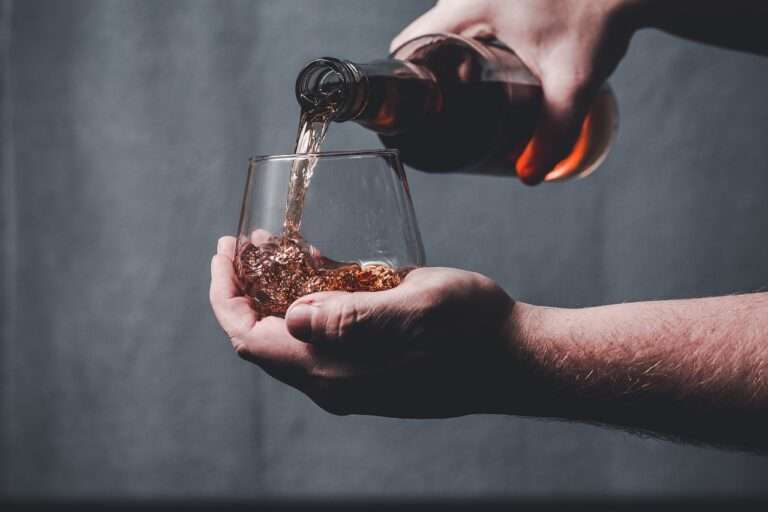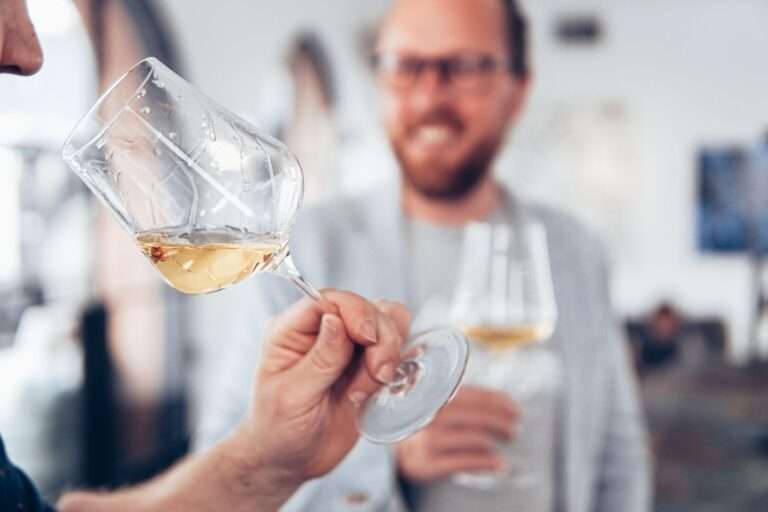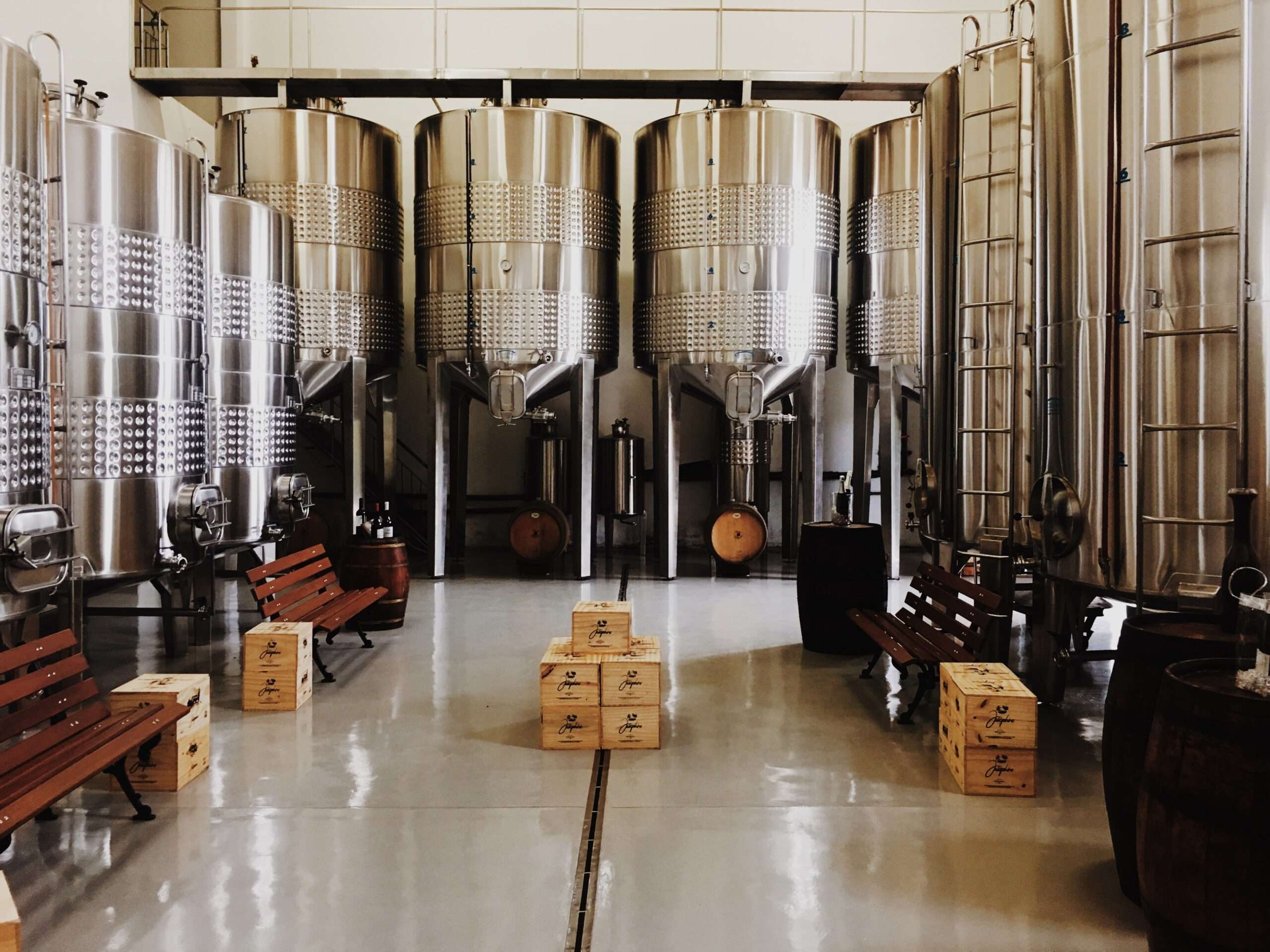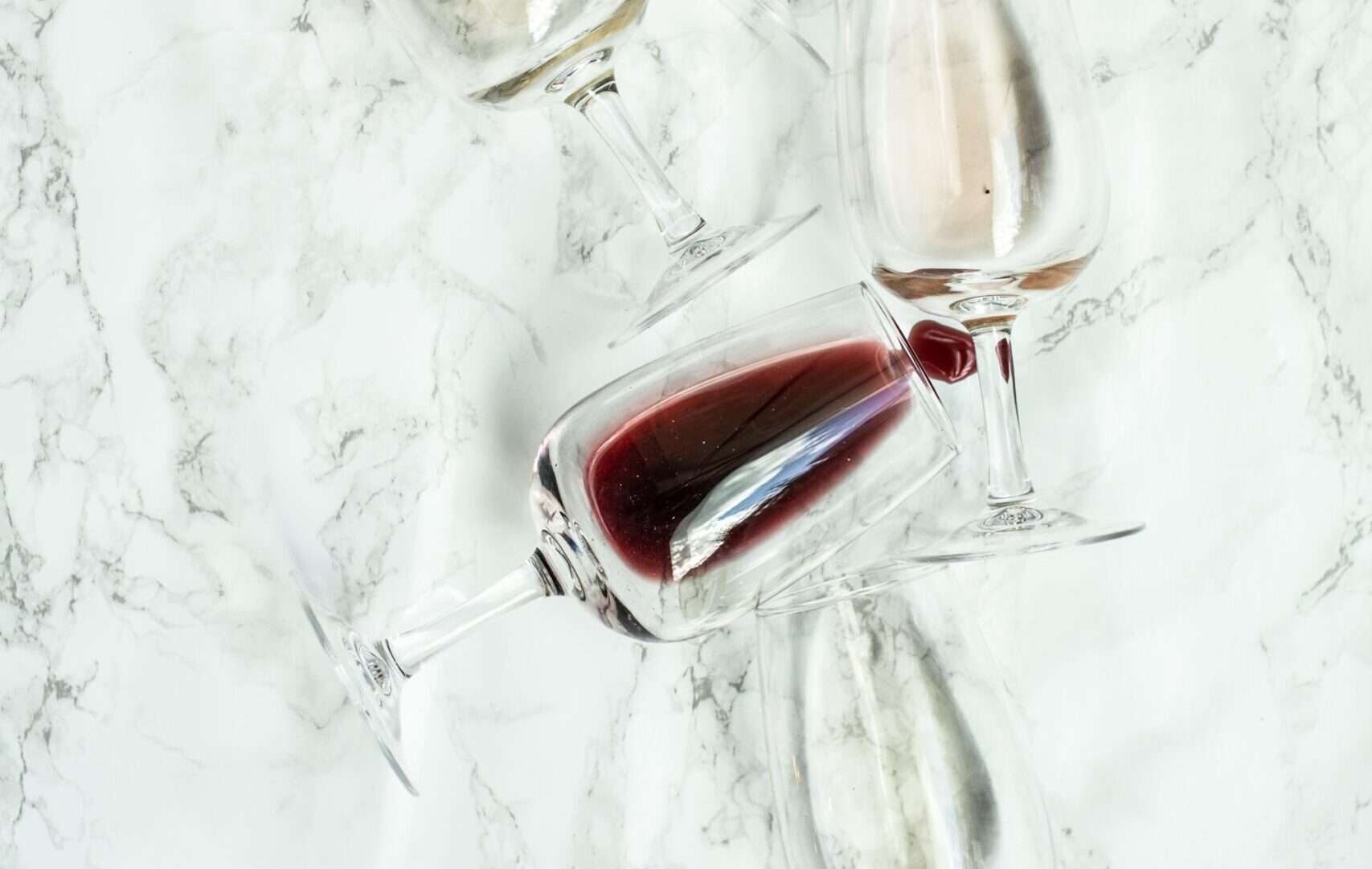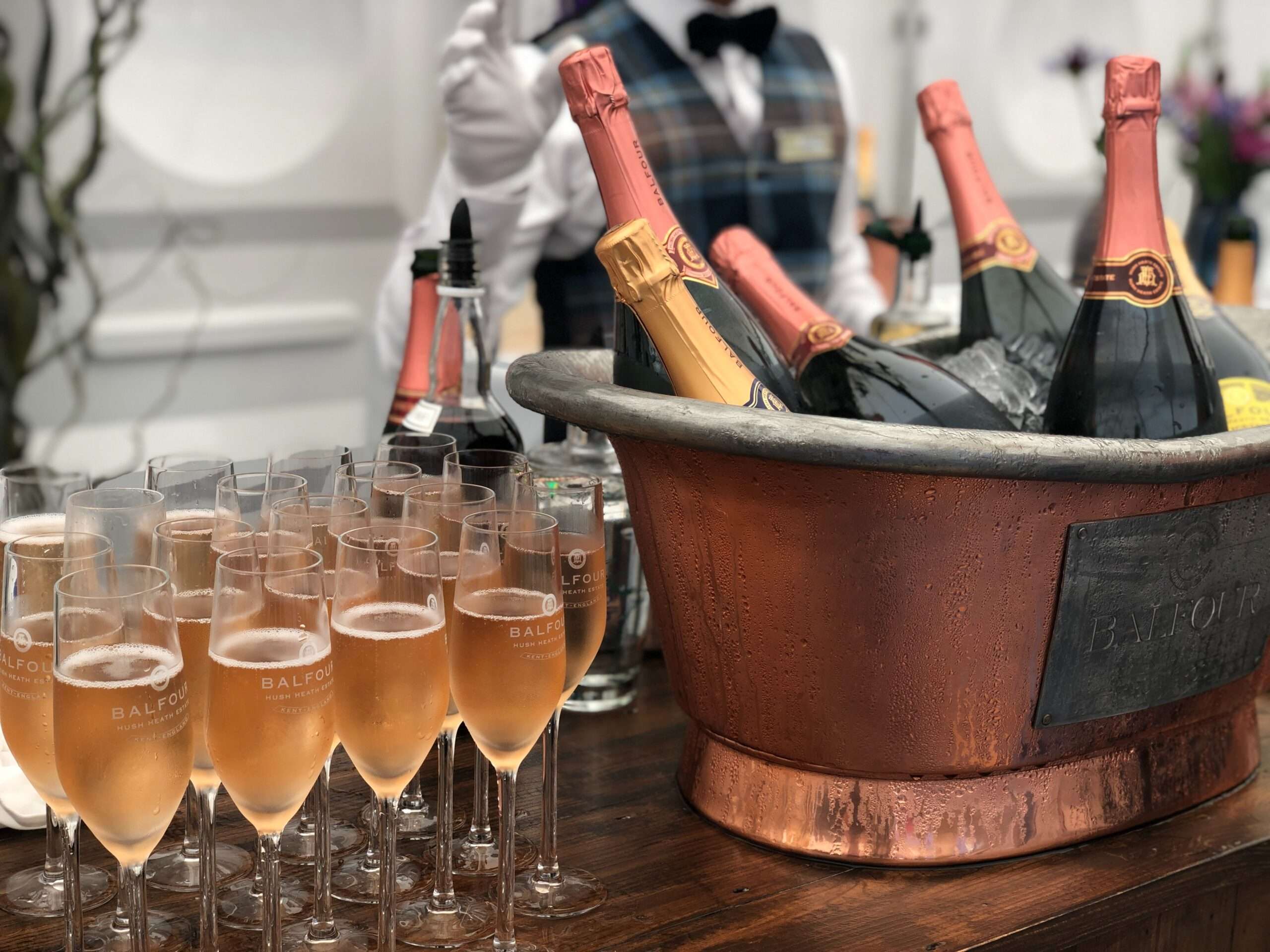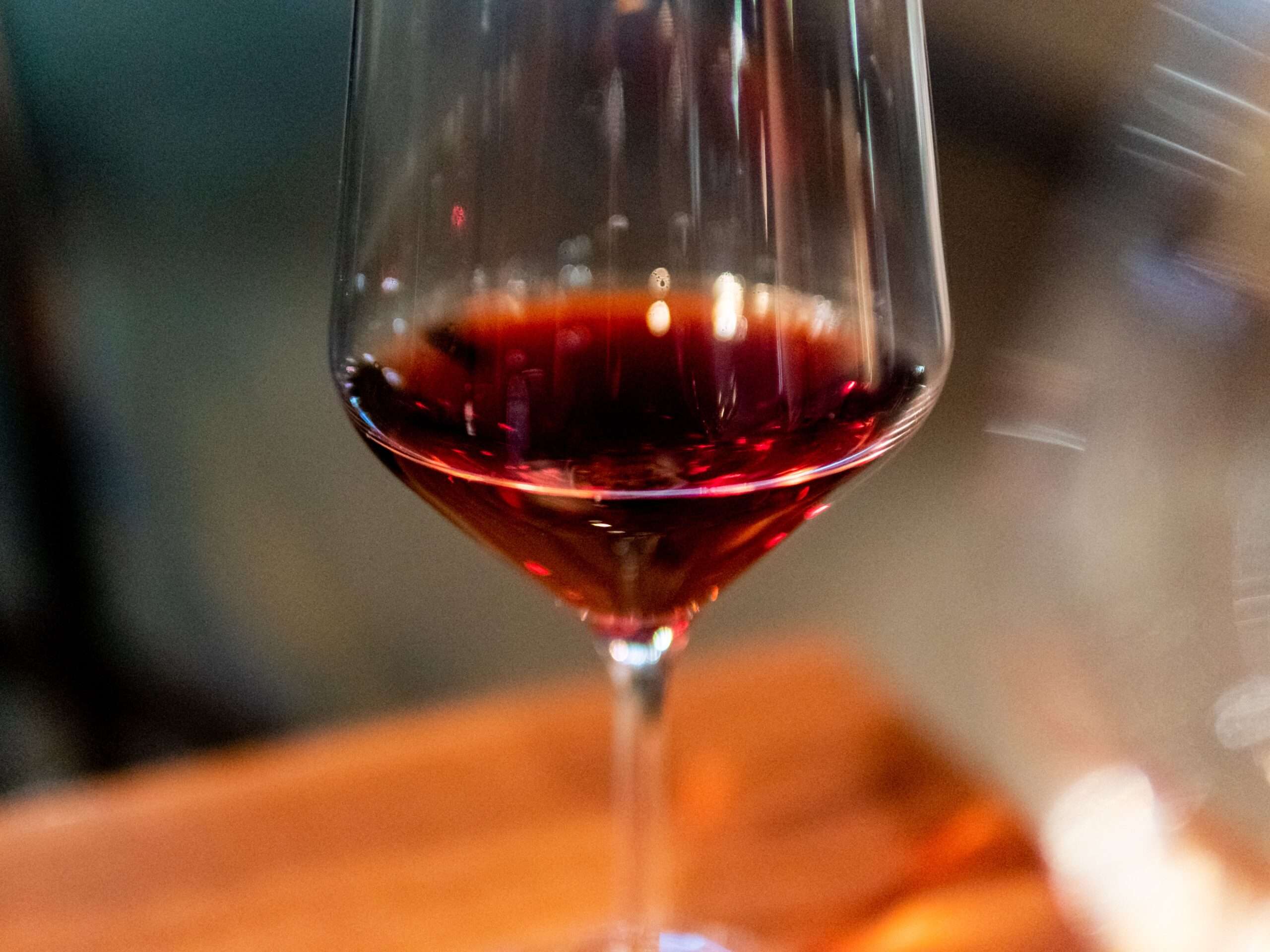One of the major advantages of drinking wine is the depth of complexity when it comes to different wine flavor profiles. Enjoying wine’s entire flavor profile involves taking in its appearance, aroma, taste, and overall impressions of the drink.
Below you’ll find a guide on how to approach a serious wine tasting. Thinking these concepts through when you try a new wine will help you determine where the wine falls on your preferences and whether you might like other wines in the same style.
Why Participate in Wine Tasting?
Doing a formal wine tasting is a good way to categorize new wines and expand your palate. However, a formal wine tasting is also a good way to compare different wines side-by-side since it’s easier to identify their contrasting features when you drink them together.
Wine tastings, whether you do them in a formal setting or informally at home, can give you a much deeper appreciation of wines and how they differ from one another.
Steps for Tasting Wine
There are several steps you have to follow when tasting wine. Here are some of the aspects of wine tasting you’ll have to deal with:
- Look: The first step in tasting wine involves inspecting the wine’s visual appearance. Assessing wine’s appearance involves looking at the wine’s color, its opacity, and its viscosity. A wine’s appearance can go a long way towards giving you an idea of which category a new or unknown wine belongs to.
- Smell: Part of tasting wine is identifying the aromas associated with each vintage. Smelling wine before tasting helps you develop a more complete flavor profile since a person’s sense of smell figures in so heavily with their sense of taste.
- Taste: Tasting wine involves assessing the wine’s overall taste structure as well as picking out and identifying individual flavor notes. When tasting wine, it’s also a good idea to note the conditions that the wine was tasted in. This can make a strong impact on your final impression of the wine.
- Profile: Once you’ve tasted, smelled, and seen the wine you’re drinking, it’s time to sit back and think about what you’ve experienced. This is how you develop a flavor profile for the wine you tried.
Wine tasting can be done either formally or as part of a casual gathering. Tasting different varietals of wine side by side can help you understand how different wine styles and varieties can contrast with each other.
Doing a Visual Inspection of Wine
The first major step in a wine tasting is doing a visual inspection of the wine. Looking at the wine can tell you a little bit about what type of wine you’re going to be drinking and what it might taste like. These are the major qualities you’ll be inspecting when you look at wine while tasting it:
- Color: The first thing you’re likely to notice when you try a new wine is its color. Wine is divided into two major categories: white wine and red wine. There is also a mixture of red and white wine known as rose or blush.
The color of a wine is dependent on the variety of wine and how long the grape skins are allowed to be in contact with the grape juice before fermentation. The red coloration in wine comes from a chemical known as anthocyanin. The darker a wine’s color, the lower the wine’s acidity. - Opacity: A wine’s opacity is a measure of how translucent the wine is. White wines tend to be clear or semi-transparent, while red wines tend to be more opaque. This is a result of the tannins and other sediments present in darker wines. Opacity can also refer to the intensity of the color in a red or blush wine.
- Viscosity: Viscosity is the term that refers to a wine’s mouthfeel or thickness. The more viscous wine is, the more thick and syrupy it is on the palate. Red wines tend to be vicious and thick, while white wines tend to be lighter and have a crisp mouthfeel. A wine’s viscosity is often measured in its legs, or the way it clings to the side of a glass.
If it’s your first time tasting a particular wine, it’s a good idea to take an index card or notebook and note down the color, opacity, and viscosity of the wine while its qualities are fresh on your mind.
What Does It Mean When Wine Turns Brown?
If you’re tasting an aged wine, you may notice that the wine turns darker around the edges and may even become brick-colored. If wine is very old, it might even be brown. This is the result of oxidation, or exposure to oxygen prior to the bottling process. Oxidation can break down the flavors and aromas of wine over time, leaving you with off-flavors over time.
How Does Wine Color Intensity Affect Flavor?
Looking at the opacity and color of wine doesn’t just give you hints into the style of wine and what it might taste like. It also tells you about the wine’s chemical composition. For example, bright red wines tend to have high acidity, while darker wines with a bluish or magenta hue have lower acidity.
Wine intensity can also tell you things about a wine’s age and mouthfeel. Red wines that are very opaque tend to have a heavy mouthfeel, while translucent wines are more crisp and light. Pigmentation of wine is also affected by age, so wines will change color the older they are.
Smelling Wine During a Tasting
After visually assessing a wine, the next step in a wine tasting is to smell the wine. Smelling wine is an important part of a wine tasting since the aroma of a wine can greatly impact the flavor profile of the wine.
Wine aromas can be separated into three major types: primary, secondary, and tertiary aromas.
- Primary aromas: Primary aromas in wine include fruity, earthy, and floral flavors. The younger a wine is, the more likely that its primary aromas are the most dominant aromas and flavors in the vintage.
- Secondary aromas: In wine tasting, secondary aromas refer to those aromas that occur as a result of the winemaking process. These include aromas that occur due to fermentation, malolactic conversion, and barrel aging in oak casks.
- Tertiary aromas: Tertiary aromas are those aromas that develop slowly over time in aged wines, causing the fruit flavors to become more muted. These aroma notes tend to be deeper and more complex, notes such as mushrooms, nuts, spices, and minerals.
On top of the normal flavors, you should sense when tasting wine, there are also off-flavors. These flavors occur when a wine is corked.
What Does It Mean When a Wine is Corked?
While you might assume that a corked wine might mean a wine that has pieces of the wine bottle cork floating around in the liquid, this isn’t the case. The truth is that corked wine refers to the taste of wine that has been tainted by the flavor of trichloroanisole, a chemical that develops from harmless fungi that comes into contact with a wine bottle’s cork.
What Does Corked Wine Taste Like?
Unlike the pleasant flavors and aromas of uncorked wine, a corked wine will have a taste and smell of soggy or rotten cardboard. Some wine drinkers have a sensitive palate and are more likely to notice cork taint than others, even at very low levels.
At one point in the wine industry, corked wines made up anywhere from seven to eight percent of all bottled wines. The prevalence of cork-tainted wine is one of the driving factors in the introduction and spread of screw cap wine bottles.
Is Corked Wine Safe to Drink?
Corked wine is completely safe to drink, even if it may not be the most pleasant experience for your nose and tongue compared to drinking a non-corked bottle of wine. With corked wine, it is flavor and aroma that are negatively affected, not food safety.
Wine Aroma Categories
When it comes to wine aroma, the primary aromas you’ll experience can be broken down into a few major categories. Here are some of the scents to be on the lookout for with your wine’s aroma:
- Citrus: The compounds responsible for citrus scents in wine are nerol and citronellol. These compounds are most commonly found in white wines. Two other compounds that can be responsible for citrus-like aromas in wine are limonene and citral.
- Orchard: In white wines, you’re most likely to encounter two major groups of aromas: citrus and orchard fruits. In wines with an orchard fruit aroma, you may be able to smell apples, peaches, or other stone fruit.
- Tropical Fruits: Tropical fruit aromas found in wines include aromas of pineapple, lychee, passionfruit, mango, and kiwi.
- Berries (Red/Blue/Black): Wines that include berry aromas may smell of raspberries, blueberries, strawberries, blackberries, and currants. Berry flavors are most often found in red wines.
The more experienced you are in tasting wine, the easier it is for you to identify individual flavor and aroma notes in a wine’s profile.
Tasting Wine
Once you’ve looked at and smelled a wine, the next step in a tasting is to actually taste it. The taste of wine is influenced both by the reception of the wine on the tongue as well as the smell of the wine. Roughly eighty percent of what a wine tastes like comes from how it smells.
Retronasal Flavors
The retronasal flavor is the flavor of a wine that occurs from the combination of traditional smell, which is called orthonasal smell, and taste modalities experienced while the wine is being held in the mouth and swallowed.
The retronasal smell is one of the most important aspects of wine tasting that allows people to experience the full flavor of the wine. The flavor is different from taste, which refers specifically to the five sensory dimensions of bitter, sour, sweet, salty, and umami.
More complex flavor profiles are the result of taste combined with the retronasal smell. Without retronasal flavors, you would be able to tell an apple and a pear are both sweet, but you wouldn’t be able to distinguish between the two when you eat them.
Sour Flavors in Wine
Sour flavor in wine can sometimes be a sign that the wine has spoiled or “gone off,” but it doesn’t always have to be. Almost all wines will have at least a note of sour flavor to them, but some wines are sweeter than others. The range of flavors in wine range from very dry to very sweet, with levels of semi-dry and semi-sweet in-between.
In the case that wine has gotten old or spoiled, you should be able to tell by the wine’s appearance before having to taste it. A red wine that has gone sour will have a slightly brownish coloration due to oxidation compared to a glass of fresh red from the same vintage. Soured wine may also begin to ferment (causing carbonation) or develop a film inside the bottle.
The sharp, unpleasant sour flavors in a wine that have been left to oxidize are different from the sour flavors present in a fresh wine. Wines with naturally high acidity, such as Reisling and Sauvignon Blanc, will have a tart flavor that is pleasing to drink and easy to distinguish from the sour, medicinal flavor of a wine that has gone off.
Sweet Flavors in Wine
Many varieties of wine have a sweet and fruity flavor. White wines typically have a lightly sweet flavor with aromas of citrus or tropical fruits, while red dessert wines are a popular pairing with after-dinner sweets. Dessert wines are often fortified varieties, such as port or Madeira.
Wines can range in sweetness from very dry (or not very much sweetness at all) to very sweet. Both red and white wine varieties can be considered sweet wines. The sweetness of a wine is often determined by the type of grape used in making it, with muscadine grapes being a common sweet grape used in table wines.
Salty Flavors in Wine
Salty flavors may not be flavors you expect to experience in wine, but a bit of salinity is actually helpful in balancing the tannins and acidity in some red wines. However, this salty flavor doesn’t come from adding actual salt to the wine. Instead, the salty flavor profile in wine can be the result of several factors:
- Geography: Wine grapes that are grown in coastal regions close to the ocean may have more salinity than other varieties since atmospheric salinity can be deposited in the soil and even on the skins of the grapes themselves.
- Soil composition: Volcanic and chalky soils can add a salty flavor to the wine. Some grape varieties may also contain chemical compounds that can give add salinity to their flavor profile.
Even though salty wine might not sound great, this flavor profile in wine actually pairs very well with certain dishes, such as seafood and other coastal fares. Salinity can also give the wine a crisp flavor that is quenching.
Texture in Wine
Along with the taste and aroma of a wine, another aspect of a wine’s flavor profile is the wine’s texture. This aspect of the wine is also known as its mouthfeel.
The texture of wine can range from a light, crisp white wine all the way to a syrupy fortified port. Wines with a high specific gravity or pigmentation tend to be heavier and more full-bodied in their mouthfeel than clear wines.
Wine texture is also affected by these factors:
- Tannins: The level of tannins in red wine can have a strong impact on its mouthfeel. Wines that are high in tannins are called dry wines because their astringency leads to a “dry” mouthfeel, while low-tannin reds have a silky or plush mouthfeel.
- Acidity: Acidity also has an effect on the mouthfeel of the wine. Very acidic wines are often described as having a sharp texture, while wines that are low in acidity are described as having a rounded texture.
- Yeast exposure: Some wines are allowed to sit on the sediment of the yeast that was used to ferment them. This yeast residue is responsible for contributing to wine’s creamy or rounded mouthfeel.
The best way to assess wine’s texture is to swish it around gently in your mouth before swallowing it.
Length of Taste
The final aspect of flavor that you should assess during a wine tasting is the length of taste. This is the amount of time that different flavor notes from the wine linger on your profile after you’ve swallowed it.
In wine tastings, a wine’s length is usually described as short, moderate, or long. Although the length of taste varies from wine to wine, a long length of taste in wine is usually considered an indicator of high quality in wine production.
Length vs. Finish in Tasting Wines
While you might hear the terms “length” and “finish” used in describing a wine’s flavor during a tasting, these terms are not interchangeable. A wine’s finish is a descriptor that involves the last flavor or mouthfeel you experience after drinking wine, but the length is a more general term that describes how long all flavors in the wine persist after drinking.
Terms that are commonly used to describe a wine’s finish include the following:
- Harsh
- Spicy
- Mineral
- Sweet
- Bitter
- Savory
- Rich
- Crisp
Noting the length and finish of wine during a wine tasting can help you determine the finer qualities of wine outside of its basic taste and aromas.
Assessing Wine in a Tasting
Once you understand the different factors that go into a wine’s flavor profile, you’re prepared to assess it formally. When you assess wine in a tasting, you’ll assess the wine on several levels:
- Wine balance: When tasting the wine, ask yourself whether the different flavors in the wine are balanced well. For example, a touch of bitterness can help compliment the flavors of sweet wines, while a touch of salinity can help complement dry red wines.
- Personal assessment: Along with assessing the flavor profile of the wine on its own merits, don’t forget to assess the wine on a personal level. This is how you build your palate for wine over time and identify trends in the types of wine that you like. It’s a useful way to try new wines to add to your collection.
- Unique characteristics: All wines have tastes and aromas that fit into traditional categories such as sweetness, tannin, body, and acidity that you can identify during a tasting, but some wines also have unique traits. These are good to note during a tasting, especially if you are tasting several similar wines.
Tasting wine can be done in a formal setting at a winery or just as a fun group activity among friends. Here are a few additional tips to take your wine tasting to the next level:
- You can either spit or swallow. If you’re trying five or six wines, you won’t want to drink a full glass of any given wine or you’ll be drunk by the end of the tasting. Instead, take your tasting wines in smaller portions (2-3 ounces) or take a mouthful of each wine before spitting it out in the spit bucket.
- Cleanse your palate between tastings. If you’re tasting several wines back to back, it’s a good idea to take a mouthful or two of water between each wine and swish it around. This can help remove any finish from the previous wine and prepare your palate for a new one.
- Swirl and sniff wine before drinking it. Assess the aroma of wine before drinking it by swirling it around gently in your wine glass and lowering your nose to the glass, taking in a breath through your nose. Some wine glasses are specifically designed to help improve the smell of wine before drinking by allowing the wine to breathe.
At a wine tasting, it’s a good idea to take notes and ask questions about any wine you’re unsure about. Also keep in mind that in many places, such as a winery, it’s considered polite to purchase at least one bottle of wine at the end of the tasting.
Wine Tasting Is a Treat for the Senses
No matter whether you’re trying a new cheap wine from the supermarket or you’re cracking open a special vintage, it’s worth the trouble to consider the different aspects involved in tasting wine.
Thinking of wine in this way can help you develop a stronger appreciation of it as you try different varieties.

